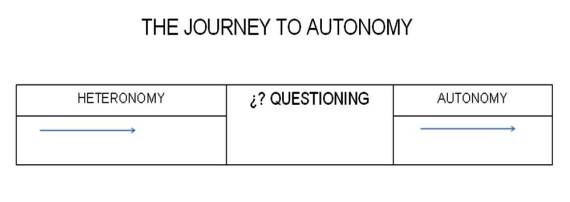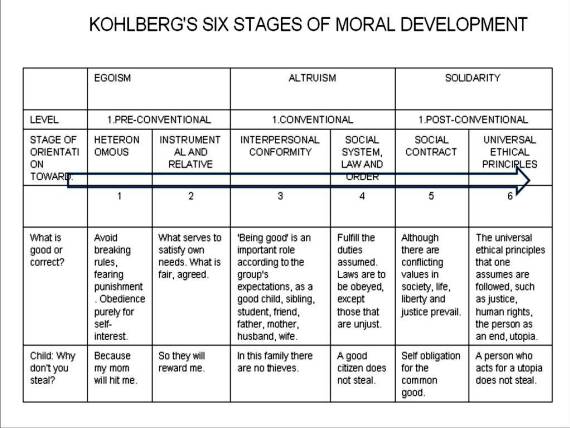We often ask ourselves why some people, from an ethical point of view, act badly. Here we will try to find an answer to this question and study its significance for society, organizations and individuals.
A good place to start is to take the definition of ethics given by Dr. Kidder: “Obedience to the unenforceable”. From this we can deduce that compliance with what is obligatory takes place on a legal, compulsory or heteronomous plane. The rule or standard is imposed on us by someone other than ourselves. They may have come from the people who raised us, the family or the community, and even from what is imposed by law. People who conform in this way will be good people, but they are not taking the final step to the ethical level, since they have not taken the leap to the voluntary or autonomous plane.
In this regard Velasquez says that ethics is the discipline that examines personal moral standards or a society’s moral standards. He goes on to say that people start to apply ethics when they take moral standards assimilated from family, church and friends, and ask what these standards imply for situations in which they find themselves, whether these standards really make sense and why they should continue to believe in them.
The answer can be found in the adult ego state, as shown in Transactional Analysis (TA). This explains how the final step is taken when moral standards are questioned from a position of autonomy and freedom, involving adult maturity committed to building a better world. These standards or values are thus assimilated and put into practice voluntarily during a person’s journey of moral development.

To try to understand what happens during this development, we can see in the table below the approach taken by the American psychologist Lawrence Kohlberg (1927-1987). This route involves moving from obligatoriness/heteronomy to autonomy.

This table shows how Kohlberg approaches people’s moral development. We can ‘compare’ this case to the act of throwing a stone into a pond, where the stone is the person.
- In level 1. pre-conventional, stage 1 Heteronomy, the child is predominantly egotistical and will do everything possible to enjoy pleasure and remove pain. The child is at a very early moral stage. It will behave well purely in its own interest, to avoid being punished. Thus the moral journey begins. Some go no further, while others do not even start.
- At the same level 1, but in stage 2, as the stone falls in the water it makes a first circle. This is what is immediate to the child, referring to the people closest to it, such as mother and those who educate it. The child will try to please them with its behavior, to be rewarded and praised for being well-behaved. This stage already represents a small move forward in moral development. Many people reach this second stage.
- Level 2. Conventional represents a shift towards the ‘other’, meaning that altruism begins. In stage 3 the ripples made by the stone fallen in the pond now make a wider circle. They now take in the family, schoolmates and workmates, with the individual trying to assimilate their values. Here we can see a more advanced moral development. The person begins to question moral standards transmitted by the family and society, and adopts those of the group.
- In this same level 2, but at stage 4, the ripples have traveled further. The individual begins to be governed by the values of a larger group, seeking to maintain the ‘institution’ as all, and, ‘if everyone were to do so’, preventing the system from fracturing. The nation’s laws are to be obeyed, unless they go against conscience. The person’s moral development is now greater. It is difficult to reach this level of moral development, but some manage it. The level of questioning of mortal standards is very strong and the standards to be adopted in the adult ego state begin to be defined clearly.
- Level 3. Post-conventional, stage 5 of the social contract is a moment in moral development that is difficult to reach. It involves becoming aware of the variety of values that underpin the different social groups, even though it is the universal values underpinning social life, such as justice, freedom and the right to life, that must prevail. Now the person begins to live with the intention of contributing to building not the ‘other’ in isolation, but the community of people. The level of moral development is very high. This means that very few people reach this level.
- In level 3, stage 6 is the highest stage in moral development. Called “universal ethical principles”, the level of autonomy reaches its maximum expression. Here the person does not act out of obligation but on the total conviction that these are the values that serve to build the utopia that inspires each individual: ‘A Better World’, ‘The Kingdom of God’, ‘A more just society’, etc.
The important thing is to know of these levels of moral development in people, mainly so that we can determine the level and stage that we ourselves have reached. Note should be taken that it is not valid to classify and believe ourselves to be in the highest stages, as these apply only to people who practice the virtues to a heroic degree, such as Mahatma Gandhi, Mother Teresa of Calcutta, Martin Luther King, etc.
Based on a knowledge of these levels and stages we can identify people in whose lives they apply, and thus take appropriate decisions. For example, managers who are aware of some aspects of the moral development of their staff can carry out organizational design, in terms of structure, processes and culture, to fit the characteristics of their people. For heteronomous staff, they will design a vertical structure with closed control processes and there will be intensive supervision. For staff with a certain degree of moral development, they may propose a flexible organization, with open controls, incubating staff creativity and responsibility.
Having said this, Kohlberg proposed that when people are identified as being at a lower stage, they are to be included in groups of people at a higher stage, giving them an example and encouragement in their moral development.
Undoubtedly human thought has tried throughout history to find an answer to the question of why people behave badly, and so we find philosophers, moralists, theologians, anthropologists, sociologists, psychologists, etc, seeking to find an answer in their respective disciplines. Along these lines we find an explanation using the model of the psychologist Lawrence Kohlberg, who shows how people acquire a moral development and behave according to certain values imposed from the outside or heteronomously or that they have assumed autonomously.
However, given the extremes of evil currently seen, one wonders if these people even began on the path of moral development, or whether, rather, they did not even have the chance to get to the first stage of heteronomy in life, having got stuck before this. The anonymous saying would seem to apply here: “God has placed obvious limits on human intelligence, but absolutely none on our stupidity.”
Knowledge of these approaches, and their use in taking appropriate decisions, will help us in the attempt to achieve a fairer society or an organization that is ethical, productive and more likely to endure over time.
Fernando Menéndez González
Universidad Iberoamericana (UIA)
References:
Clark Power, F., Higgins, Ann and Kohlberg, Lawrence, Lawrence Kohlberg’s approach to moral education, New York, Columbia University Press, 1989.
Shays, E.M. Obedience to the Unenforceable. Journal of Management Consulting, 9(2), 1996, p. 42-43.
Velasquez, Manuel G., Ética en los negocios, Conceptos y casos, seventh edition, Mexico, Prentince Hall, 2012.
Ibid.
Comments on this publication